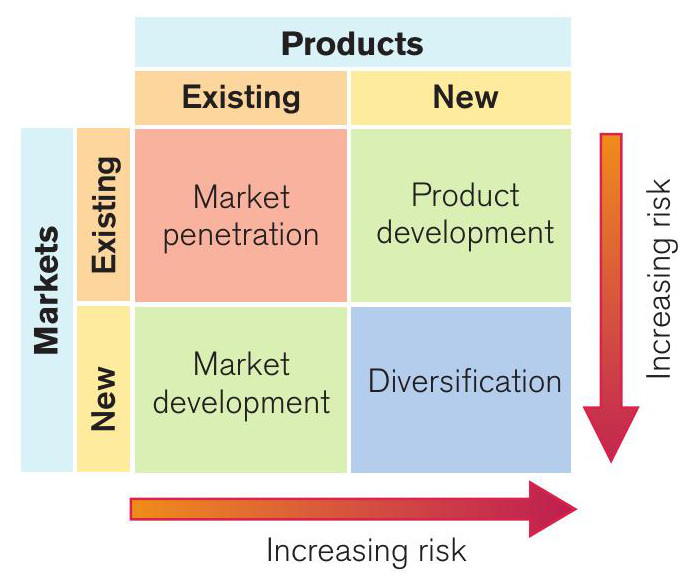
Imagine you run a successful business based in and operating out of the UK. You have managed to establish your firm as the market leader and are looking to grow the business further. What are your options? One strategy is to develop your product overseas and exploit new and emerging markets. Tesco is a case in point. This UK company has a dominant position on the high street, but in the last 10 years it has been at the forefront of developing operations on a global scale. Its bold strategy has yielded a number of business benefits. In terms of Ansoff’s matrix, this strategy is known as market development.
Ansoff’s matrix (see Figure 1) looks at how firms can seek to increase sales through either existing or new products in existing or new markets. Taking a successful product in the UK and developing it into a new market is an example of market development. Although the risk is relatively low, this option does not guarantee success. Marks and Spencer decided to take its very British product overseas with mixed results. Opening a flagship store on the Champs Élysée in Paris and offering British sandwiches and underwear to a nation that prides itself on its cuisine and lingerie was probably always doomed to failure.
Your organisation does not have access to this article.
Sign up today to give your students the edge they need to achieve their best grades with subject expertise
Subscribe




